
Whenever a new assisted braking device hits the market there's one question people consistently ask - is it as good as the GriGri? The Petzl GriGri has been the industry standard ever since its launch in 1991, and despite repeated attempts since then to match it, nothing has yet knocked it off the top spot. Well, until now.
But whilst I am a fan and a user of the GriGri, I'd be the first to admit that it's not perfect. In some regards its popularity is quite ironic, as it can be quite counter-intuitive to use - especially compared to something like the Climbing Technology Click Up, which is infinitely easier to operate. With the launch of the Edelrid Pinch, though, the outlook is a little different, as here is a product that looks like a genuine contender to take the GriGri's throne.
Please note: this is an assisted braking device, NOT an automatic braking device. Whilst you'll often see people using these devices without their hands on the rope, this is not just bad practise - but extremely dangerous. It's best considering such devices as something that has the potential to offer additional safety when used properly; but they do need to be used properly!
In Use
Perhaps the most unique feature of the Pinch, and the one that we're most frequently asked about, is the fact that it clips in directly to your harness. I must admit, when I first saw it I did wonder whether or not this was a gimmick - something that Edelid had done to give it a point of difference; however, having used it - I take it all back, because it's an absolute game-changer.
By clipping it direct to your harness you get a much, much greater level of control. This is even more noticeable when you switch back to using a screwgate, which you can also do with the Pinch (it works both with and without); and when you've got that additional link in the chain you realise how inefficient belaying is in comparison, because there's so much more movement within the system. As a result of this, the Pinch is much nicer to handle because the process of paying out slack, and taking it in, is so much quicker and easier. The only downside is that it's a little more awkward to rack on your harness whilst it's not in use, but it isn't that difficult, and you could always use a carabiner for that.
When it comes to belaying, the other thing you notice - aside from the increased efficiency of paying out and taking in slack - is the fact that you can do it without the cam kicking in. With the GriGri the thumb catch, which effectively disables the cam, feels essential for smooth operation; but with the Pinch it doesn't, and as a result the action is more intuitive - especially from a beginners perspective - as it's simply much more natural. This means I'd be much happier giving a Pinch than a GriGri to a novice, because there are far fewer caveats I'd need to give regarding its usage. But what if you're not a newcomer to assisted braking devices? Well, for those who have used the GriGri, the Pinch will feel quite familiar, because whilst they are different in some ways they are still similar in terms of the fundamentals.
The Pinch is designed to work with ropes between 8.5 - 10.5mm, an extremely broad range which is likely to cover most people. What you'll notice, like with many other devices of this kind, is that if you're using a thinner rope it'll pay through more easily, and if you're using a thicker rope, it'll be that bit more grabby. In practise this actually works quite well, because people tend to use thinner ropes on the redpoint, where you're going to want rope paid out faster, whereas thicker ropes (i.e. 10mm and above) tend to be used in situations where people prioritise durability as opposed to performance. When it comes to lowering, due to the variable camming angle featured, you get a good degree of control, and unlike the devices of yesteryear it's not completely binary (i.e. on or off).
There have been some concerns voiced online regarding whether or not it is possible to open the Pinch whilst in use, due to the positioning of the button on its side, but thanks to a small ridge on the back this is (thankfully) not possible.
Features
The Pinch features an anti-panic function, which means that if you pull the lever back too far it will lock, ceasing to feed the rope out. This is a feature some will like and others won't, which is why Edelrid supply a small screw which allows you to override it. My guess is that anyone with less experience might prefer to keep this feature operational, as an extra 'just in case', whereas more experienced climbers will probably prefer it without, as this does make lowering much easier since you don't have to find that sweet spot before the anti-panic function kicks in. This is most noticeable when using thicker ropes, where the margin between lowering and anti-panic is quite subtle and it's easy (and annoying) to accidentally go over that line, meaning that everything stops.
Summary
With the Pinch, Edelrid have done something distinctly Edelrid, by taking a completely fresh look at a product and category that has seen little decent innovation in years. The result is a bit of a game changer. I really like the fact you can attach it directly to your belay loop, as this gives you much more precise performance. And in contrast to most designs of assisted braking device, which tend to need a practised knack, its intuitive functionality will appeal to beginners and experienced climbers alike. So going forward, will I be using the Pinch in preference to the GriGri? Yes, absolutely.








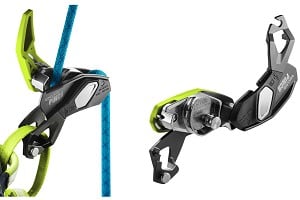
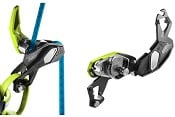
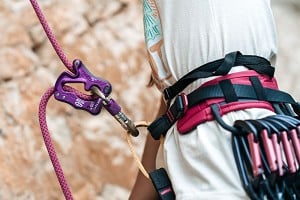

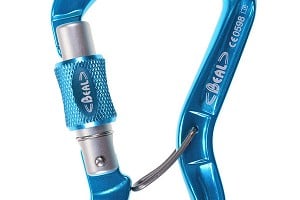
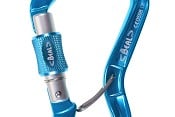
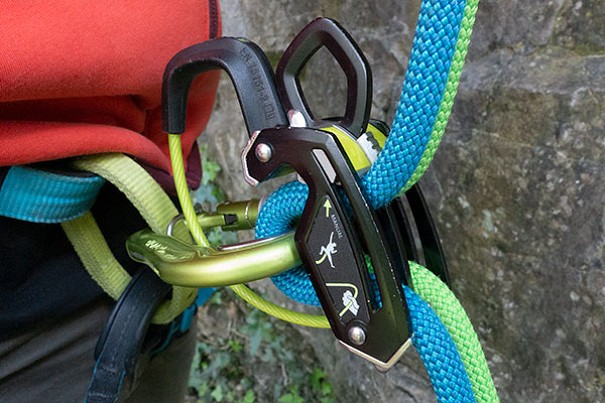
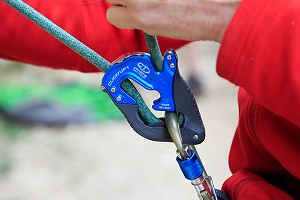
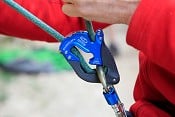
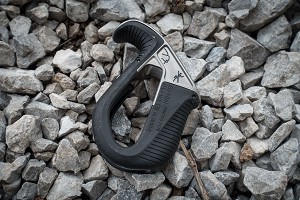
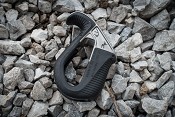


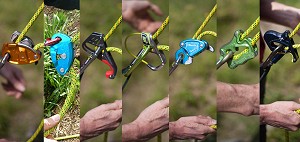

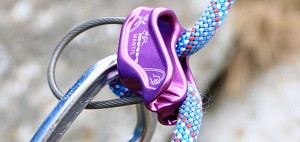

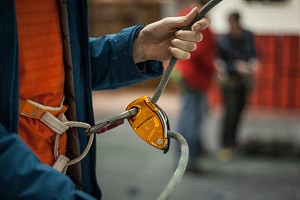
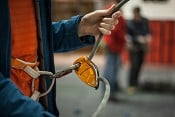
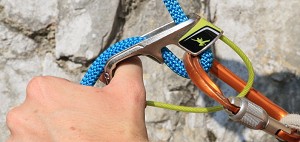

Comments
With mine, I first just got a tiny wire gate krab to rack it with. Of course for most single pitch trad you're not going to carry the device up the route anyway, but you can then use that krab as a super safe back up when you have it clipped directly to your harness. This is an option for those of us who are super timid and when your deep paranoia and existential dread leads you to suspect you might be the one in a million who manages to some how fall over and open the Pinch on an unfortunately protruding rock just as your partner takes a whipper! Having done this a bit (used a backup krab, not fallen over while belaying) I've found a keylock krab is better than a hooked nose wire gate, being marginally less fiddly. I've got some Edelrid sliders with such noses which work great but it doesn't really need any locking mech, just the lightest one makes sense.
It would have been very nice to have it compared to the NEOX. I guess most people have a grigri, and decide to either move to a Neox or a Pinch.
They're somewhat different beasties, though. The Pinch and Grigri are takes on the same principle
With regards to the claim of opening the device whilst it's in use being "physically impossible", I'd like to direct you towards HardIsEasy's recent youtube video, titled Edelrid Pinch - "Strange" Experiments and Long Term Review, where he shows a situation (somewhat accidentally, I might add) in which the device can be opened whilst in use. It's a bit of an edge case, but I'd say falls within the realms of possibility.
As per nufkin's post - the Pinch and GriGri are very similar products, hence logical to compare to each other. The Neox is obviously pitched another level up in terms of performance, which is either a strength or weakness depending on what you're after. Ultimately, it's probably a bit more niche, For 90% of climbers the GriGri or Pinch would be a more suitable product, but for the 10% who're after that greater level of performance (i.e. faster paying out and taking in of slack) then Neox would be better.